Engine Development CAHU
In order to consistently test internal combustion engines (ICE) it is critical to minimise the variance in the environment parameters, one of which is the air being used by the engine for combustion.
This case study details the Combustion Air Handling Units (CAHU) controlled and monitored by the Prodigy SCADA Test Cell systems used by a leading diesel engine manufacturer.
![CAHU Infrastructure]()
![CAHU Display]()
![CAHU Controller Faceplates]()
This case study details the Combustion Air Handling Units (CAHU) controlled and monitored by the Prodigy SCADA Test Cell systems used by a leading diesel engine manufacturer.
OVERVIEW
![CAHU]() Minimising the variance in the engine combustion air intake means conditioning it so that it has a consistent temperature, pressure and humidity, regardless of the local atmospheric conditions at the time of the test.
Minimising the variance in the engine combustion air intake means conditioning it so that it has a consistent temperature, pressure and humidity, regardless of the local atmospheric conditions at the time of the test.
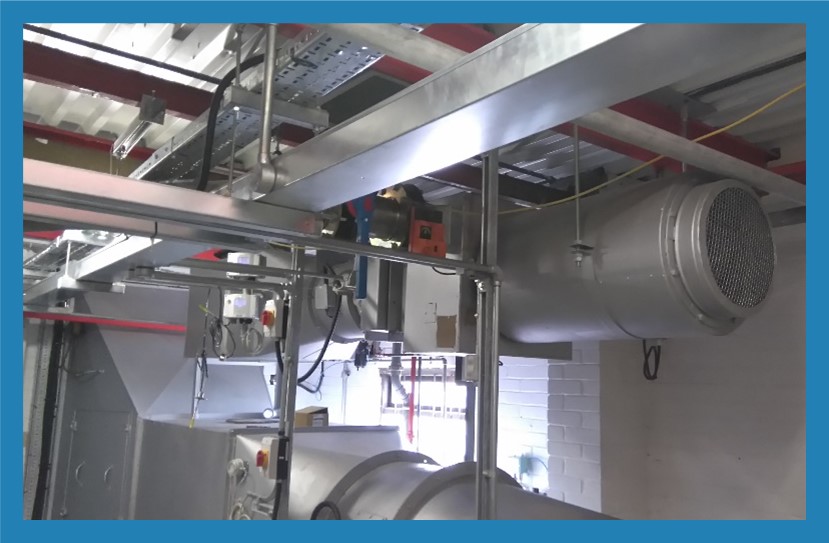 Minimising the variance in the engine combustion air intake means conditioning it so that it has a consistent temperature, pressure and humidity, regardless of the local atmospheric conditions at the time of the test.
Minimising the variance in the engine combustion air intake means conditioning it so that it has a consistent temperature, pressure and humidity, regardless of the local atmospheric conditions at the time of the test.Why is the system critical?
To assess if engine modifications deliver improvements, it is critical that different test runs can be compared on a like for like basis. As engine performance is fundamentally affected by environmental factors, accurate control of these is essential, which also allows comparisons of test results from similar engines, regardless of the manufacturer or where in the world the tests are being run.
FUNCTIONALITY
![CAHU HMI]()
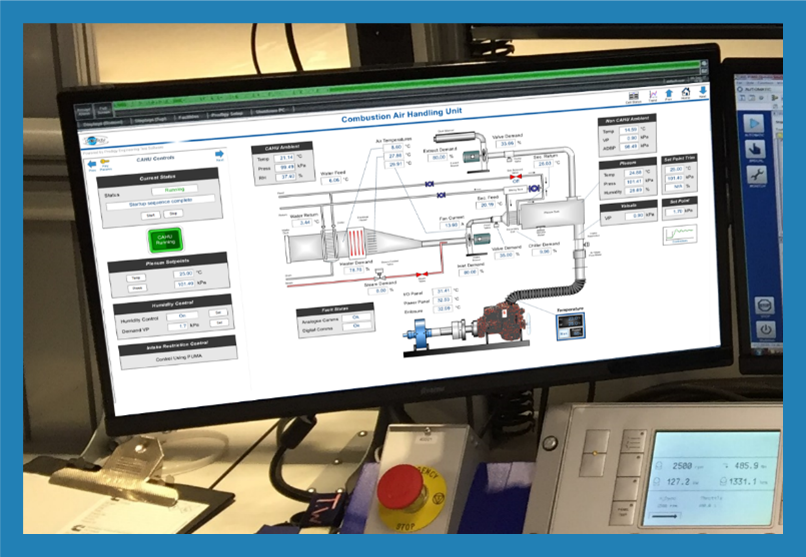
Prodigy Test Cell
Each Prodigy Test Cell is designed to control the conditioning of its combustion air (temperature, pressure and humidity) through chiller and heater elements, steam injection, dump valve and fan speed adjustments.
Control Process
The control process is very complex and consists of a number of conflicting elements: for example, if the temperature of the atmospheric air is too high it needs to be cooled which will change its pressure. In order to increase humidity, steam is injected which will raise the temperature…
Prodigy’s sequence language, Slang, and software PID controllers were deployed to manage each of the control circuits:
- Chiller
- Heater
- Humidifier (Vapour Pressure)
- Air Intake Fan
- Feed Valve
- Air Extract Fan
- Dump Valve
Start-up checks confirm the state of isolators, inverters, fire dampers etc. to feedback any issues to the test and facility engineers to simplify fault finding.
THE DETAIL
![Partnership]()

Working in Partnership
Working in partnership with the customer allowed the key skills from both sides to be utilised in the best way possible. The customer managed the design of the duct work and installation of sensors etc., the Prodigy engineers handled the design and implementation of the control system, with both sides working together to commission the full system.
Infrastructure
The system is built around a LAN infrastructure with I/O equipment positioned at appropriate positions in and around the Test Cell. Current measurements of temperature, barometric pressure and relative humidity are read in from sensors in a Stevenson Screen and then passed on to the Test Cell to be used in the control decisions.
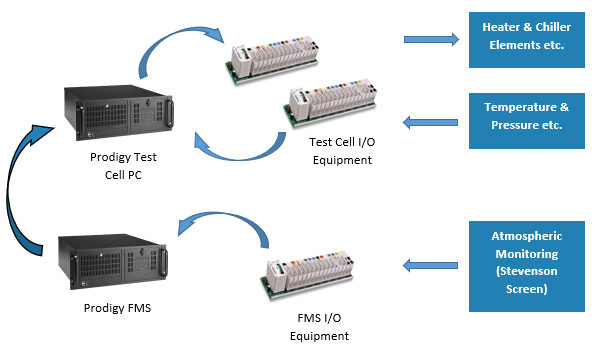
Control Philosophy
An external chiller circuit reduces the incoming air temperature where the external ambient humidity is too high, and if the air temperature is too low, heater elements are used to raise it. The required vapour pressure is used as a setpoint to control the injection of steam from a boiler system common across all of the Test Cells.
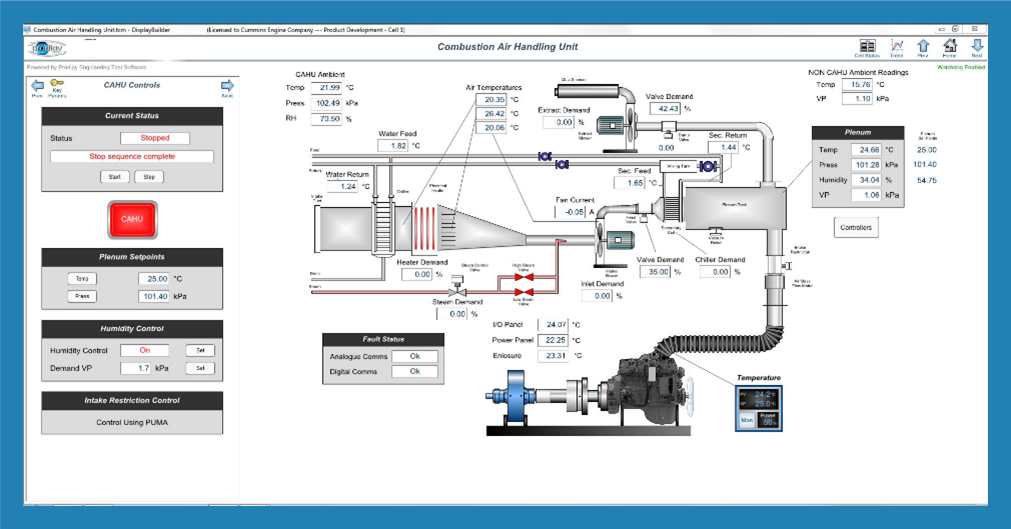
The air pressure is controlled using a plenum and a combination of an intake and extract fan, along with a feed and dump valve. The required air is then drawn off the plenum through the usual air intake restriction valve.
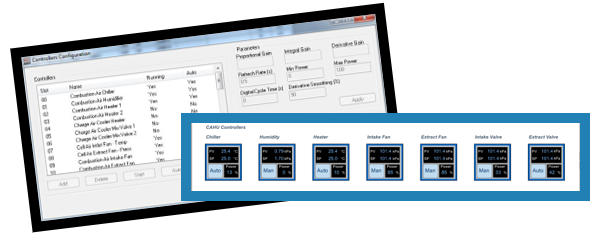
Startup sequences are handled by SLANG (Sequence LANGuage) programs, to ensure that all facility equipment, limit switches etc. are in the appropriate positions, and all signals are recorded and made available on real-time and historic trend displays so that specific events can be reviewed.
Click to download in pdf format
Click to download in pdf format
